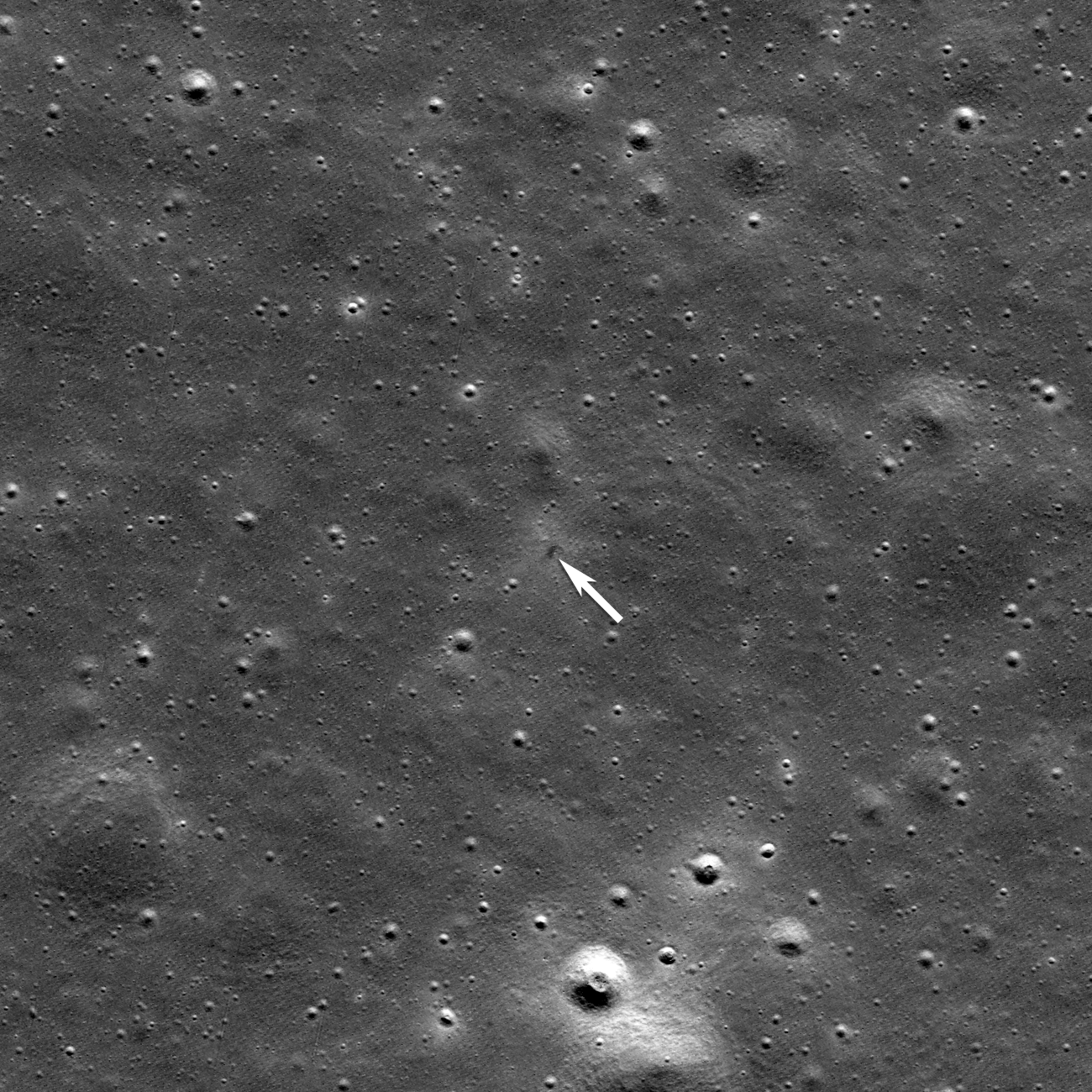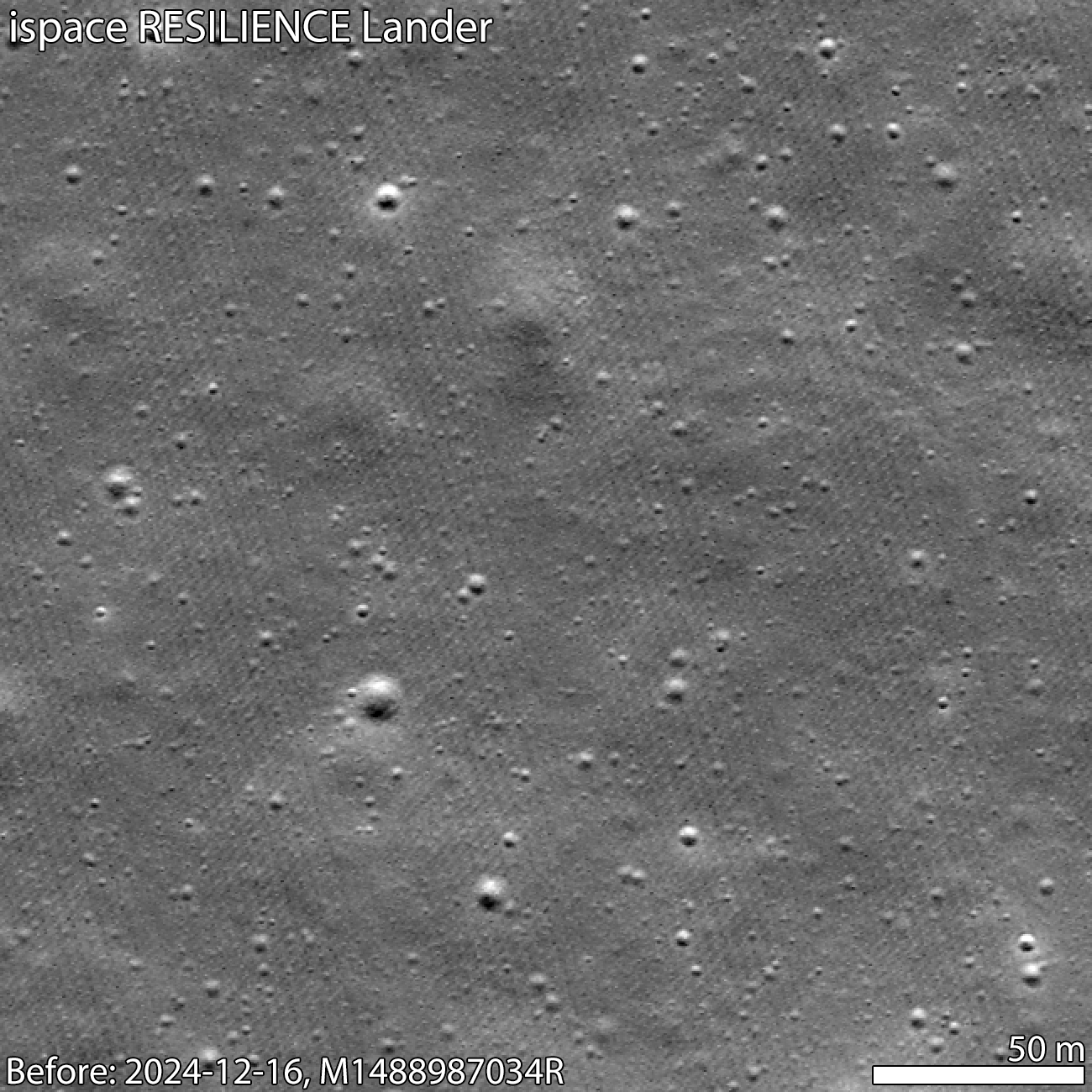NASA’s LRO Views ispace HAKUTO-R Mission 2 Moon Lander Impact Site
- NASA’s Lunar Reconnaissance Orbiter (LRO) captured photos of the impact site of the ispace HAKUTO-R Mission 2 Moon lander, which experienced a hard landing on June 5, 2025.
- The LRO’s Narrow Angle Camera took images from about 50 miles above the surface of Mare Frigoris, a volcanic region with large-scale faults, and captured a dark smudge surrounded by a subtle bright halo at the impact site.
- The dark smudge was formed as the vehicle impacted the surface, kicking up regolith (rock and dust) that makes up Moon “soil”, while the faint bright halo resulted from low-angle regolith particles scouring the delicate surface.
- The RESILIENCE lunar lander, launched on January 15, 2025, was part of a privately funded spacecraft mission to explore the Moon’s surface.
- The LRO has been collecting valuable data since its launch in 2009 and will continue to contribute to our knowledge about the Moon as NASA returns to the lunar surface with commercial and international partners.
On June 11, NASA’s LRO (Lunar Reconnaissance Orbiter) captured photos of the site where the ispace Mission 2 SMBC x HAKUTO-R Venture Moon (RESILIENCE) lunar lander experienced a hard landing on June 5, 2025, UTC.
RESILIENCE was launched on Jan. 15 on a privately funded spacecraft.
LRO’s right Narrow Angle Camera (one in a suite of cameras known as LROC) captured the images featured here from about 50 miles above the surface of Mare Frigoris, a volcanic region interspersed with large-scale faults known as wrinkle ridges.
The dark smudge visible above the arrow in the photo formed as the vehicle impacted the surface, kicking up regolith — the rock and dust that make up Moon “soil.” The faint bright halo encircling the site resulted from low-angle regolith particles scouring the delicate surface.
LRO is managed by NASA’s Goddard Space Flight Center in Greenbelt, Maryland, for the Science Mission Directorate at NASA Headquarters in Washington. Launched on June 18, 2009, LRO has collected a treasure trove of data with its seven powerful instruments, making an invaluable contribution to our knowledge about the Moon. NASA is returning to the Moon with commercial and international partners to expand human presence in space and bring back new knowledge and opportunities.
More on this story from Arizona State University’s LRO Camera website
Media Contact
Karen Fox / Molly Wasser
Headquarters, Washington
202-358-1600
karen.c.fox@nasa.gov / molly.l.wasser@nasa.gov
Lonnie Shekhtman
NASA’s Goddard Space Flight Center, Greenbelt, Md.
lonnie.shekhtman@nasa.gov


